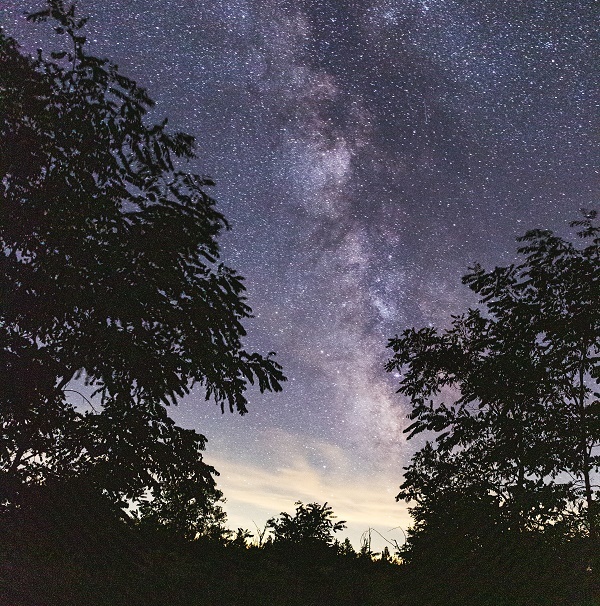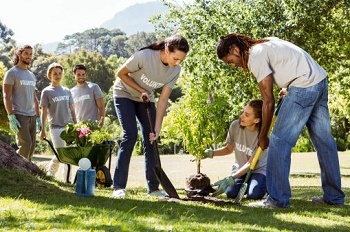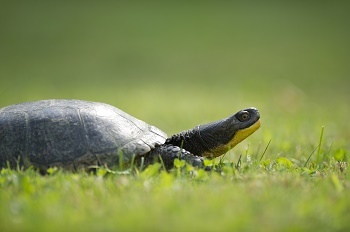|
This week's stories may reflect how the Department of Natural Resources has adapted to meet customer needs and protect public health and safety. Follow our COVID-19 response page for updates on access to facilities and programs.
We'll continue to share news and information about the best ways to discover and enjoy Michigan's natural and heritage resources! Here's a look at some of this week's stories:
See other news releases, Showcasing the DNR stories, photos and other resources at Michigan.gov/DNRPressRoom.
PHOTO FOLDER: Larger, higher-res versions of some of the images used in this news digest are available in this folder.
 Want to see more pictures like this, taken by Michigan state parks photo ambassador Jessica Sancrant at Port Crescent State Park (one of Michigan's dark sky preserves) in Huron County? Visit Instagram.com/MiStateParks to explore photos and learn more about the photo ambassadors! For more on the program, call Stephanie Yancer at 989-274-6182.

You may have noticed over your morning cup of coffee or tea that more birds are flitting from tree to flower to ground in search of food and water. It also might strike you how quiet these birds are compared to the morning chorus common in May and June.
At the end of July, most chicks have fledged, meaning they have left the nest. Birds are most abundant now compared to other times of the year as fledglings join the ranks of their parents. Most adults stop singing – no longer defending their territories or in search of mates – and are busy rearing their young and teaching them how to find their own food before they fly south for the winter.
As birdsong quiets down, it can leave those of us who cherish the dawn choir longing for more. The good news is that with diminished birdsong comes the arrival of migratory Arctic shorebirds that only visit Michigan during their incredible journeys to and from their wintering grounds.
|
Most of these shorebirds breed in arctic tundra – some as far west as Alaska and others as far east as Russia, giving them some of the longest migrations! Some shorebirds, like the pectoral sandpiper, migrate to Argentina and Chile and have a round-trip flight of up to 19,000 miles each year. The least sandpiper, meanwhile, can fly nonstop for up to 2,500 miles.
The best places to look for these incredible travelers include coastal mudflats, rocky or sandy shorelines, and some inland habitats like flooded fields, wet meadows, and muddy edges of wetlands, lakes and ponds.
Here are some shorebirds to expect over the next few months in Michigan:
August and September
August, September and October
Possible sightings in August and September
Learn more about Michigan’s birds on the DNR birding page, or from MI Birds, a public outreach and engagement program created by Audubon Great Lakes and the Michigan DNR. Follow on Facebook, Instagram and Twitter and sign up for email updates.
Questions? Contact the DNR Wildlife Division at 517-284-9453.

On the way to school, the park or a city walking trail, take a look around. Could your local trees benefit from increased maintenance, planning or management technology? Or maybe outreach and education could help share the importance of trees with the next generation. If you’re interested in helping to green your community, connect with your local municipal office, campus administration or other planning authority to share the Community Forestry grant opportunity, administered by the DNR.
Through this grant program, Michigan communities can obtain resources for improved management and grow connections to public trees and forests through inventory projects, Arbor Day celebrations, tree care outreach, urban forestry technology and more.
“These grants support communities and partners around the state in providing better management, maintenance and education related to community trees and forests,” said Kevin Sayers, coordinator of the DNR's Urban and Community Forestry program.
A total of up to $125,000 in federal grant funding is available. Applicants may request between $1,000 and $15,000 in reimbursable, matching grant funds for a variety of project activities. A 1-to-1 match is required and can be nonfederal cash and/or in-kind services.
Eligible applicants include local units of government, educational institutions, nonprofit organizations, tribal governments and other public entities in Michigan. Applications must be received by Sept. 17, 2021, and projects completed by Sept. 1, 2022.
Find more information at Michigan.gov/UCF. Questions? Contact Kevin Sayers at 517-582-3209.
|

Community scientists throughout the state stepped up and answered the call for rare-turtle observation reports this spring, submitting over 200 confirmed reports of Blanding's turtles (pictured) – a species of special concern in Michigan. Additionally, the U.S. Fish and Wildlife Service is evaluating whether the status of Blanding’s turtle warrants listing as a federally endangered or threatened species.
Turtle sighting data submitted through the DNR’s Eyes in the Field online reporting system and verified by DNR and Michigan Natural Features Inventory staff have been submitted for inclusion in the USFWS Species Status Assessment process. That assessment helps inform the listing decision.
In case you missed it, read the full article in which the DNR Wildlife Division recently talked about the volunteer effort and how such observation reports help Michigan's rare turtles.
Sightings of rare turtles, including the Blanding’s turtle, eastern box turtle, spotted turtle and wood turtle, can still be reported through the DNR’s Eyes in the Field turtle reporting form.
|

Ready to ride where there’s plenty of woods and no pavement to be seen? State forest roads are your gateway to outdoor adventure.
To make sure people know which forest roads are open or closed to public use, the DNR annually updates its online maps on April 1 as part of its review process. This annual update helps ensure that the DNR’s forest road inventory is accurate and meets requirements outlined in Public Act 288 of 2016.
Comments on forest road maps may be submitted at any time. Feedback received by Aug. 31 will be considered when developing the 2022 maps. Public input helps the DNR decide which roads should be open or closed to off-road and conventional vehicles.
Updates may include decisions to open or close a road to ORV or conventional vehicle traffic, or to update a road’s status. These decisions are typically made to protect damaged natural resources, ensure public safety due to road conditions or fix data errors.
About 12,400 miles of forest roads currently are open to the public. View the status of forest roads and submit comments on an interactive map at Michigan.gov/ForestRoads, or email comments to DNR-RoadInventoryProject@Michigan.gov.
Questions? Contact Jason Caron at 906-235-4361.
|
|